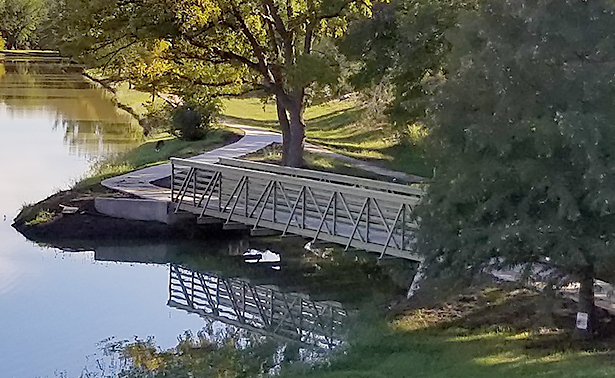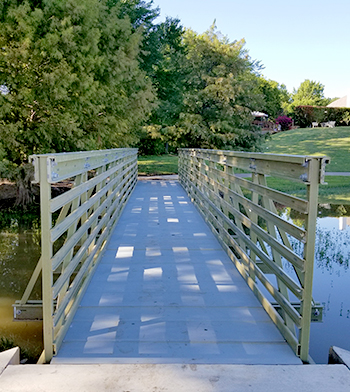Case Study: Using FRP to Bridge the Gap in a Suburban Community


As suburban communities continue to expand throughout the United States, so do the demands of creating recreational trails and walkways within those spaces.
This was the case for a subdivision in the Mid-Cities region of Texas. In this instance, a homeowner’s association in Arlington needed to extend a walking path over a narrow section of a pond within a community park.
The association sourced multiple designers before selecting Areté Structures, LLC for this new build. The Areté design offered the best overall value and quality of building materials. Upon delivery of all materials to the worksite, the assembly portion of the job was completed by installers within a few days.
As a pedestrian application, EXTREN® Series 500 structural shapes made up the supporting structure and parapets. For the surface of the bridge, the design used SAFDECK® overlapping decking panels, as it offers superior performance over materials susceptible to corrosion and rot.
| TECHNICAL DATA |
|---|
| Product: Suburban Community Walking Trail Bridge |
| Process: Pultrusion, Fabrication |
| Materials & Sizes: SAFDECK Overlapping Decking Panels with Medium Epoxy Grit EXTREN® Series 500 Structural Shapes: - Channel: 3" x 7/8" x 1/4", 6" x 1-5/8" x 1/4", 6" x 1-11/16" x 3/8" - Square tube: 2" x 2" x 1/4" - Square bar: 1-1/2" - Plate: 3/8", 1/2" |
| For: Areté Structures, LLC |
| User: Arlington, Texas Community Homeowners |
For decades, SAFDECK® has competed with wood, aluminum, and steel in applications such as temporary flooring, odor control covers, wind walls, dock surfacing, cellular wall panels, and even rooftop decking for cooling towers. The appeal in this design is that the interlocking design reduces tripping hazards while remaining structurally strong.
Because of its proximity to foliage and water, the use of treated lumber decking raised long-term durability concerns due to constant exposure from surrounding detritus.
The finished bridge spans over 40 feet and is five feet wide, so it can easily accommodate two lanes of pedestrian traffic.
The homeowner’s association is happy to report that the reactions from its community have been overwhelmingly positive regarding this structure, which is expected to offer many years of maintenance-free service.